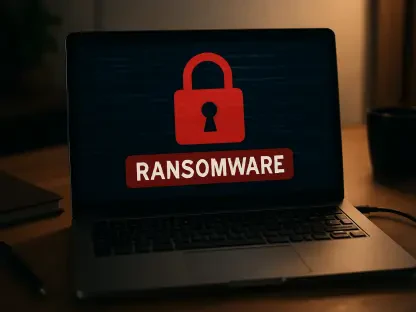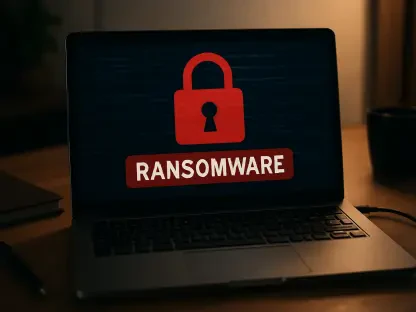In an alarming development within the cybersecurity landscape, a sophisticated hacking campaign has emerged, targeting customer environments of Salesforce, a dominant force in cloud-based software solutions, through applications developed by Gainsight, a company known for its customer success platforms. This incident has sent shockwaves through the tech industry, exposing the vulnerabilities inherent in third-party integrations within software-as-a-service (SaaS) ecosystems. Reports indicate that cybercriminals exploited OAuth tokens associated with Gainsight apps to gain unauthorized access to Salesforce instances, potentially compromising sensitive customer data. This breach not only highlights the ingenuity of modern hackers but also raises urgent questions about the security of interconnected applications. As businesses increasingly rely on such integrations to streamline operations, understanding the mechanics of this attack becomes crucial for safeguarding digital assets against evolving threats in an interconnected world.
Uncovering the Breach Mechanism
The core of this hacking campaign lies in the exploitation of OAuth tokens, a widely used authentication mechanism that allows third-party apps to access user data without exposing credentials. Hackers, reportedly linked to the notorious group ShinyHunters, targeted these tokens connected to Gainsight apps integrated with Salesforce environments. By manipulating the permissions granted through these tokens, attackers bypassed traditional security barriers to infiltrate customer instances. This method mirrors tactics seen in prior attacks on other SaaS platforms, reflecting a calculated strategy to exploit trusted relationships between software providers. The scale of the breach is significant, with estimates suggesting over 200 customer environments may have been affected, underscoring the potential for widespread data compromise. Salesforce has clarified that the vulnerability does not stem from its core platform but rather from the external apps, spotlighting the risks of third-party dependencies in cloud ecosystems.
Further investigation into the breach reveals a pattern of deliberate targeting by cybercriminals who capitalize on the trust users place in established app marketplaces like Salesforce’s AppExchange. Once access was gained via the compromised OAuth tokens, attackers could potentially harvest credentials, extract sensitive information, or even deploy additional malicious payloads within the affected environments. This incident serves as a stark reminder of how interconnected systems, while beneficial for functionality, can become entry points for malicious actors if not rigorously monitored. The involvement of ShinyHunters, a group known for high-profile data breaches, adds a layer of complexity, as their expertise in exploiting SaaS integrations indicates a growing sophistication among threat actors. Organizations must now grapple with the reality that even trusted applications can become conduits for cyberattacks if proper safeguards are not in place.
Salesforce and Gainsight’s Response Strategies
In response to the identified threat, Salesforce acted swiftly to mitigate risks by revoking all active and refresh tokens linked to the implicated Gainsight applications. Additionally, the company took the precautionary step of temporarily removing these apps from its AppExchange marketplace to halt further unauthorized access. This decisive action reflects a commitment to protecting customer environments, even as it underscores the challenges of managing third-party integrations. Salesforce has also collaborated with Mandiant, part of Google Threat Intelligence Group (GTIG), to notify potentially impacted organizations and provide guidance on securing their systems. While no evidence suggests a flaw in Salesforce’s core infrastructure, the incident has prompted a broader discussion about the need for stringent vetting processes for external apps. Updates and resources are being shared via Salesforce’s Trust site to keep customers informed and equipped to handle potential fallout.
Complementing Salesforce’s efforts, Gainsight has acknowledged the issue through a customer support communication, expressing its dedication to working alongside Salesforce to pinpoint the root cause of the token revocation. This joint investigation aims to uncover how the breach occurred and to develop measures to prevent recurrence. The partnership between the two companies highlights the importance of transparency and collaboration in addressing cybersecurity incidents, especially when customer trust is at stake. However, the incident has inevitably raised concerns among users about the reliability of third-party apps and the security protocols surrounding their integration. As both companies strive to contain the damage, their response serves as a case study in crisis management within the SaaS sector, emphasizing the need for rapid reaction and clear communication to maintain confidence among stakeholders amidst a breach of this nature.
Broader Implications for SaaS Security
The hacking campaign targeting Salesforce through Gainsight apps is not an isolated event but rather a symptom of a larger trend in cybercrime where attackers increasingly focus on third-party integrations as weak links in SaaS ecosystems. Experts from GTIG, including principal threat analyst Austin Larsen, have stressed the critical importance of auditing SaaS environments and regularly reviewing OAuth tokens for any signs of suspicious or unused applications. This incident amplifies the call for organizations to adopt proactive security measures, such as rotating credentials at the first sign of unusual activity. The recurring nature of such attacks, as seen in previous campaigns targeting other platforms, indicates that cybercriminals are refining their methods to exploit trusted connections, making it imperative for businesses to stay ahead of these evolving tactics. The broader takeaway is a pressing need for heightened vigilance around app permissions and integrations.
Beyond immediate security practices, this breach underscores a systemic challenge in securing interconnected digital environments, where the convenience of third-party apps must be balanced against potential risks. The estimated impact on over 200 instances illustrates the scale at which such vulnerabilities can disrupt operations and compromise Posted 6 months ago in Law
Assistant: Fixed version:
In an alarming development within the cybersecurity landscape, a sophisticated hacking campaign has emerged, targeting customer environments of Salesforce, a dominant force in cloud-based software solutions, through applications developed by Gainsight, a company known for its customer success platforms. This incident has sent shockwaves through the tech industry, exposing the vulnerabilities inherent in third-party integrations within software-as-a-service (SaaS) ecosystems. Reports indicate that cybercriminals exploited OAuth tokens associated with Gainsight apps to gain unauthorized access to Salesforce instances, potentially compromising sensitive customer data. This breach not only highlights the ingenuity of modern hackers but also raises urgent questions about the security of interconnected applications. As businesses increasingly rely on such integrations to streamline operations, understanding the mechanics of this attack becomes crucial for safeguarding digital assets against evolving threats in an interconnected world.
Uncovering the Breach Mechanism
The core of this hacking campaign lies in the exploitation of OAuth tokens, a widely used authentication mechanism that allows third-party apps to access user data without exposing credentials. Hackers, reportedly linked to the notorious group ShinyHunters, targeted these tokens connected to Gainsight apps integrated with Salesforce environments. By manipulating the permissions granted through these tokens, attackers bypassed traditional security barriers to infiltrate customer instances. This method mirrors tactics seen in prior attacks on other SaaS platforms, reflecting a calculated strategy to exploit trusted relationships between software providers. The scale of the breach is significant, with estimates suggesting over 200 customer environments may have been affected, underscoring the potential for widespread data compromise. Salesforce has clarified that the vulnerability does not stem from its core platform but rather from the external apps, spotlighting the risks of third-party dependencies in cloud ecosystems.
Further investigation into the breach reveals a pattern of deliberate targeting by cybercriminals who capitalize on the trust users place in established app marketplaces like Salesforce’s AppExchange. Once access was gained via the compromised OAuth tokens, attackers could potentially harvest credentials, extract sensitive information, or even deploy additional malicious payloads within the affected environments. This incident serves as a stark reminder of how interconnected systems, while beneficial for functionality, can become entry points for malicious actors if not rigorously monitored. The involvement of ShinyHunters, a group known for high-profile data breaches, adds a layer of complexity, as their expertise in exploiting SaaS integrations indicates a growing sophistication among threat actors. Organizations must now grapple with the reality that even trusted applications can become conduits for cyberattacks if proper safeguards are not in place.
Salesforce and Gainsight’s Response Strategies
In response to the identified threat, Salesforce acted swiftly to mitigate risks by revoking all active and refresh tokens linked to the implicated Gainsight applications. Additionally, the company took the precautionary step of temporarily removing these apps from its AppExchange marketplace to halt further unauthorized access. This decisive action reflects a commitment to protecting customer environments, even as it underscores the challenges of managing third-party integrations. Salesforce has also collaborated with Mandiant, part of Google Threat Intelligence Group (GTIG), to notify potentially impacted organizations and provide guidance on securing their systems. While no evidence suggests a flaw in Salesforce’s core infrastructure, the incident has prompted a broader discussion about the need for stringent vetting processes for external apps. Updates and resources are being shared via Salesforce’s Trust site to keep customers informed and equipped to handle potential fallout.
Complementing Salesforce’s efforts, Gainsight has acknowledged the issue through a customer support communication, expressing its dedication to working alongside Salesforce to pinpoint the root cause of the token revocation. This joint investigation aims to uncover how the breach occurred and to develop measures to prevent recurrence. The partnership between the two companies highlights the importance of transparency and collaboration in addressing cybersecurity incidents, especially when customer trust is at stake. However, the incident has inevitably raised concerns among users about the reliability of third-party apps and the security protocols surrounding their integration. As both companies strive to contain the damage, their response serves as a case study in crisis management within the SaaS sector, emphasizing the need for rapid reaction and clear communication to maintain confidence among stakeholders amidst a breach of this nature.
Broader Implications for SaaS Security
The hacking campaign targeting Salesforce through Gainsight apps is not an isolated event but rather a symptom of a larger trend in cybercrime where attackers increasingly focus on third-party integrations as weak links in SaaS ecosystems. Experts from GTIG, including principal threat analyst Austin Larsen, have stressed the critical importance of auditing SaaS environments and regularly reviewing OAuth tokens for any signs of suspicious or unused applications. This incident amplifies the call for organizations to adopt proactive security measures, such as rotating credentials at the first sign of unusual activity. The recurring nature of such attacks, as seen in previous campaigns targeting other platforms, indicates that cybercriminals are refining their methods to exploit trusted connections, making it imperative for businesses to stay ahead of these evolving tactics. The broader takeaway is a pressing need for heightened vigilance around app permissions and integrations.
Beyond immediate security practices, this breach underscores a systemic challenge in securing interconnected digital environments, where the convenience of third-party apps must be balanced against potential risks. The estimated impact on over 200 instances illustrates the scale at which such vulnerabilities can disrupt operations and compromise data integrity. As SaaS platforms continue to dominate business operations, the responsibility falls on both providers and users to implement robust safeguards. Security teams are encouraged to prioritize continuous monitoring and to establish strict policies for third-party app approvals. This incident serves as a wake-up call for the industry to reassess how trust is assigned within digital ecosystems, pushing for innovations in authentication protocols and more rigorous standards for app developers to prevent future exploits of this nature from occurring.
Lessons Learned and Future Safeguards
Reflecting on the aftermath of this hacking campaign, it became evident that the exploitation of OAuth tokens by groups like ShinyHunters had exposed critical gaps in the security of third-party SaaS integrations. Salesforce’s prompt revocation of tokens and removal of Gainsight apps from AppExchange had been a necessary step to curb further damage, while collaborative efforts with Gainsight and GTIG had aimed to dissect the breach’s origins. The incident, affecting potentially over 200 customer environments, had served as a powerful reminder of the persistent threats facing cloud-based platforms. It had also highlighted the ingenuity of cybercriminals in targeting trusted connections, pushing the industry to confront uncomfortable truths about the vulnerabilities inherent in interconnected systems.
Moving forward, organizations should consider adopting a multi-layered security approach that includes regular audits of app permissions, immediate credential rotation upon detecting anomalies, and stricter vetting of third-party applications. Embracing advanced monitoring tools to detect unauthorized access in real-time could further bolster defenses. Additionally, fostering a culture of cybersecurity awareness among employees may help mitigate human error as a contributing factor in breaches. The collaboration seen between Salesforce and Gainsight sets a precedent for transparency, suggesting that future partnerships between SaaS providers should prioritize joint security initiatives. Ultimately, this incident offers a chance to rethink how trust and security are managed in digital ecosystems, ensuring that convenience does not come at the expense of robust protection against ever-evolving cyber threats.









